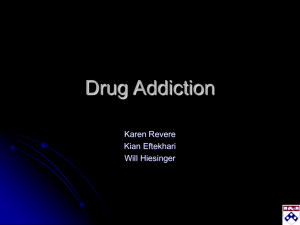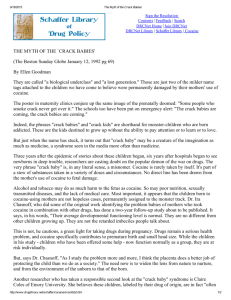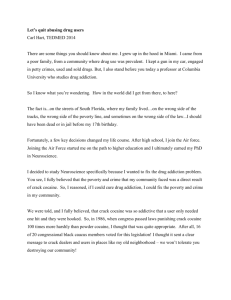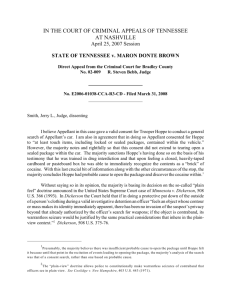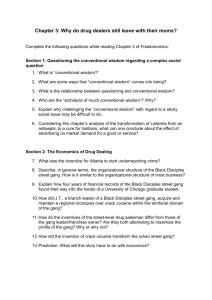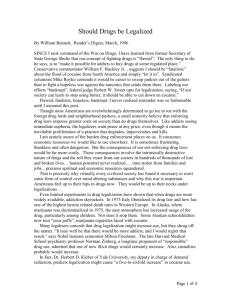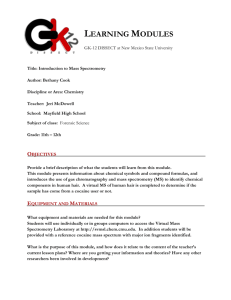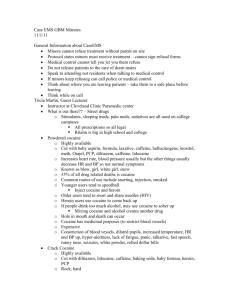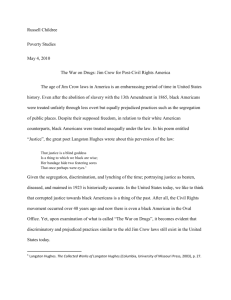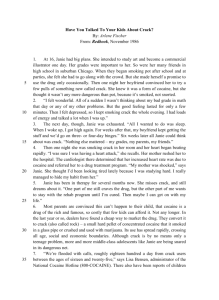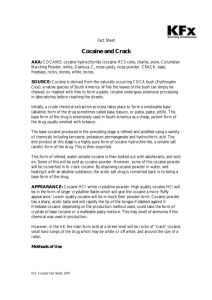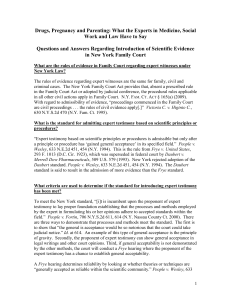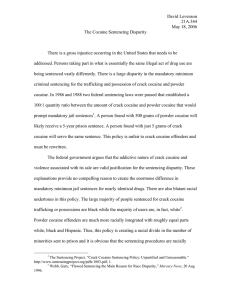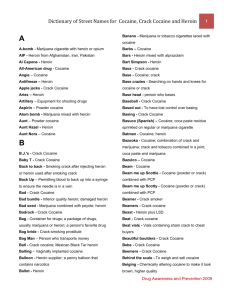Appendix 1 – details of clinical assessments Craving (five
advertisement
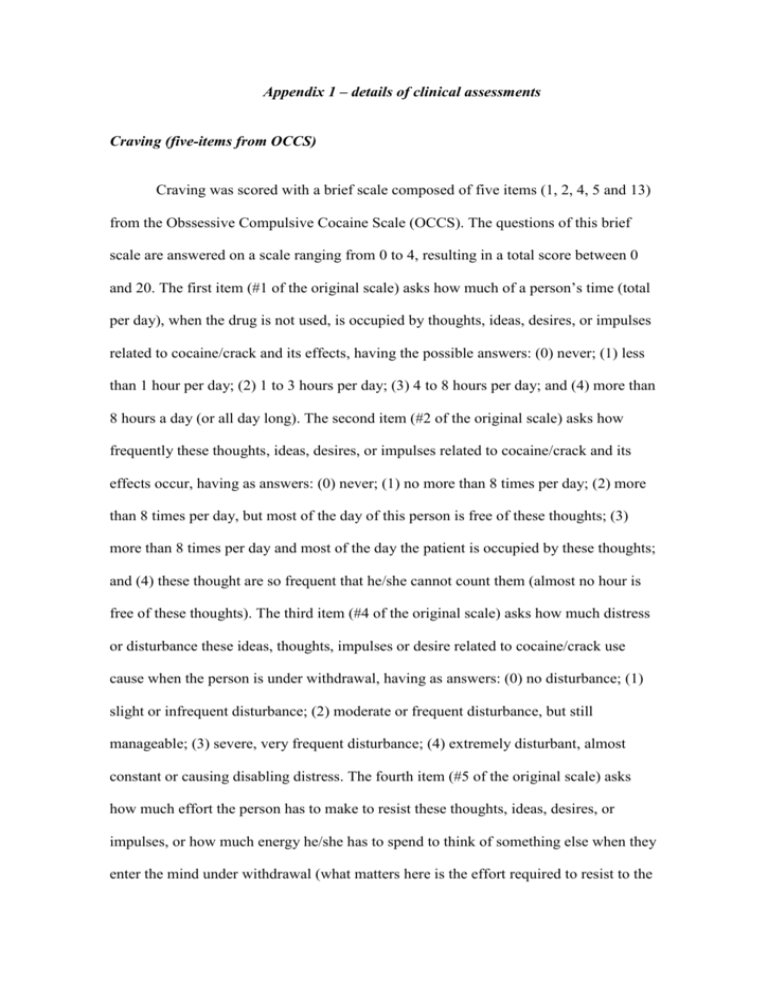
Appendix 1 – details of clinical assessments Craving (five-items from OCCS) Craving was scored with a brief scale composed of five items (1, 2, 4, 5 and 13) from the Obssessive Compulsive Cocaine Scale (OCCS). The questions of this brief scale are answered on a scale ranging from 0 to 4, resulting in a total score between 0 and 20. The first item (#1 of the original scale) asks how much of a person’s time (total per day), when the drug is not used, is occupied by thoughts, ideas, desires, or impulses related to cocaine/crack and its effects, having the possible answers: (0) never; (1) less than 1 hour per day; (2) 1 to 3 hours per day; (3) 4 to 8 hours per day; and (4) more than 8 hours a day (or all day long). The second item (#2 of the original scale) asks how frequently these thoughts, ideas, desires, or impulses related to cocaine/crack and its effects occur, having as answers: (0) never; (1) no more than 8 times per day; (2) more than 8 times per day, but most of the day of this person is free of these thoughts; (3) more than 8 times per day and most of the day the patient is occupied by these thoughts; and (4) these thought are so frequent that he/she cannot count them (almost no hour is free of these thoughts). The third item (#4 of the original scale) asks how much distress or disturbance these ideas, thoughts, impulses or desire related to cocaine/crack use cause when the person is under withdrawal, having as answers: (0) no disturbance; (1) slight or infrequent disturbance; (2) moderate or frequent disturbance, but still manageable; (3) severe, very frequent disturbance; (4) extremely disturbant, almost constant or causing disabling distress. The fourth item (#5 of the original scale) asks how much effort the person has to make to resist these thoughts, ideas, desires, or impulses, or how much energy he/she has to spend to think of something else when they enter the mind under withdrawal (what matters here is the effort required to resist to the thoughts and not the failure or success to control them), having as answers: (0) intensity is so weak that it requires no effort to resist them; (1) try to resist most of the time; (2) need to make a lot of effort to resist; (3) the effort would be so hard that they give in to these thoughts after a while; (4) They can absolutely not resist and they give in to all these thoughts without trying. Finally, the last item (#13 from the original scale) asks about the person’s drive to use cocaine/crack, having as answers: (0) they never feel compelled to use cocaine/crack; (1) some pressure to use cocaine/crack; (2) strong pressure to use cocaine/crack; (3) they feel a very important drive that compels them to use cocaine/crack; (4) they feel a very powerful drive to use cocaine/crack that they cannot resist (Vorspan et al., 2012). This scale was applied in the week before the beginning of the real or sham-tDCS treatment, during the treatment (first and second weeks), and in the week after the end of the treatment. Hamilton Depression Rating Scale (HAM-D) The severity of depression symptoms was analyzed via a multiple-choice questionnaire. This instrument assesses the severity of depression symptoms such as low mood, insomnia, agitation, anxiety and weight loss (Hamilton, 1960). The examiner must choose between the possible answers to each question by interviewing the patient and by observing the patient's symptoms. Each question has between 3 and 5 possible answers that increase in severity. In the original scale, the first 17 questions contribute to the total score, while questions 18 to 21 provide additional information about depression (e.g., diurnal variation, paranoid symptoms), but are not included in the total score of the scale. This scale was applied at the beginning and at the end of the treatment. Hamilton Anxiety Rating Scale (HAM-A) The severity of anxiety symptoms was analyzed via a structured multiple-choice questionnaire (Hamilton, 1959). The scale consists of 14 items, each defined by a series of symptoms, and measures both psychic anxiety (e.g., mental agitation and psychological distress) and somatic anxiety (e.g., physical complaints related to anxiety). This scale was also applied at the beginning and at the end of the treatment. Quality of Life An abbreviated instrument of cross-culturally valid assessment of quality of life of the World Health Organization (WHOQOL-BREF) with 26 questions (Skevington et al., 2004) translated to Portuguese (Fleck et al., 2000) was applied at the beginning and at the end of the treatment. This instrument yields four domains (physical health, psychological, social relationships and environment) and two individually scored items regarding overall perception of quality of life (Q1, i.e., first question) and health (Q2, i.e., second question). The four domain scores are scaled in a way that higher scores stand for higher quality of life. These scores were transformed to be comparable with the scores used in the WHOQOL-100 (WHO, 1996). References Fleck MP, Louzada S, Xavier M, Chachamovich E, Vieira G, Santos L, Pinzon V (2000) [Application of the Portuguese version of the abbreviated instrument of quality life WHOQOL-bref]. Rev Saude Publica 34:178-183. Hamilton M (1959) The assessment of anxiety states by rating. Br J Med Psychol 32:50-55. Hamilton M (1960) A rating scale for depression. J Neurol Neurosurg Psychiatry 23:56-62. Skevington SM, Lotfy M, O'Connell KA (2004) The World Health Organization's WHOQOL-BREF quality of life assessment: psychometric properties and results of the international field trial. A report from the WHOQOL group. Qual Life Res 13:299-310. Vorspan F, Bellais L, Romo L, Bloch V, Neira R, Lepine JP (2012) The Obsessive-Compulsive Cocaine Scale (OCCS): a pilot study of a new questionnaire for assessing cocaine craving. Am J Addict 21:313-319. WHO (1996) Introduction, Administration, Scoring and Generic Version of the Assessment. Field Trial Version. In.

